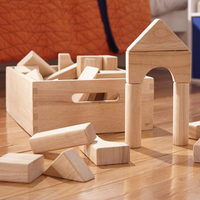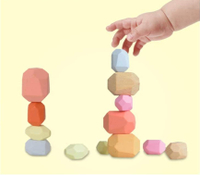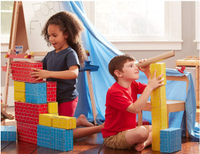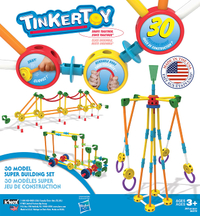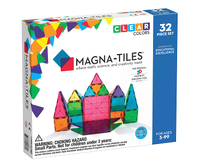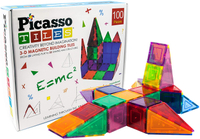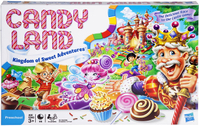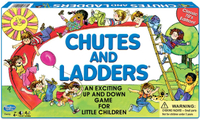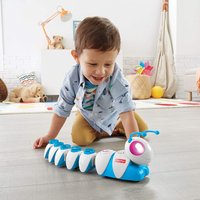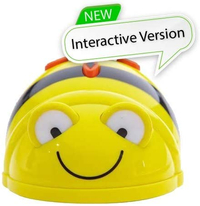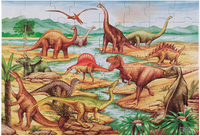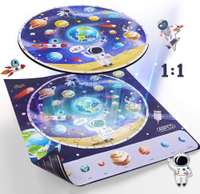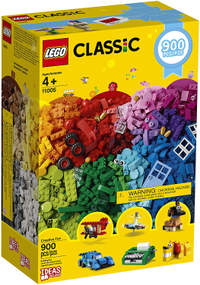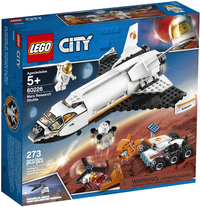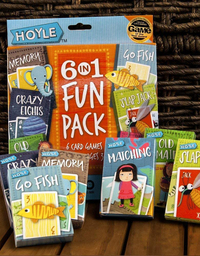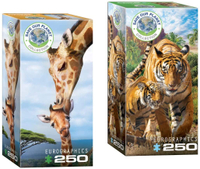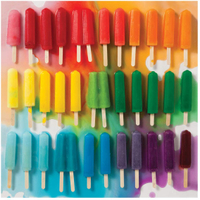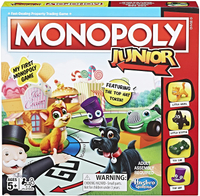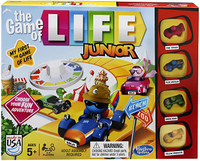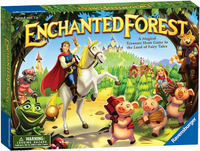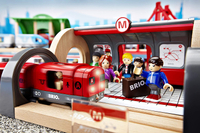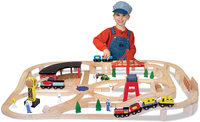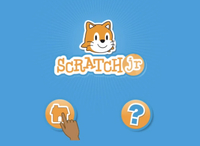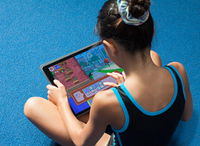The best STEM toys 2022
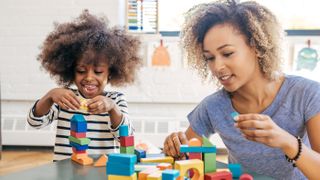
Many toys are labeled as "STEM toys," with claims that they teach kids science, technology, engineering and math. But very few toys that hold these claims are actually studied. Some may be fun but not particularly educational; others focus on STEM topics but may not hold kids’ attention for long.
The research on educational toys suggests that some of the best STEM toys are the classics. Anything that allows children to build, play, experiment and build again — in an endless array of variations — will teach spatial and mathematical skills. Many of these activities can be done with free or cheap materials just as well as with pricier options.
According to Kathy Hirsh-Pasek, a psychologist at Temple University who studies learning in early childhood, the best STEM toys are active, engaging, meaningful, social and fun. This list highlights some examples that researchers have studied directly or that check those boxes.
Best STEM Toys for Toddlers (ages 2-5)
Wooden Blocks
Why you can trust Live Science Our expert reviewers spend hours testing and comparing products and services so you can choose the best ones for you. Find out more about how we test.
Wooden and other types of blocks are a "magical" toy for young children, said Jeffrey Trawick-Smith, a professor emeritus at the Center for Early Childhood Play at Eastern Connecticut University. They allow for endless creativity, meaning kids can return to the same set again and again (unlike some toys that kids play with for a day and then forget forever). They also encourage social play and mathematical thinking. A study in the Journal of Early Childhood Research by Trawick-Smith and colleagues found that when preschoolers played with blocks with a high level of social interaction, they built more complex structures. Building complex structures was associated with gains in math learning.
Melissa & Doug Standard Unit Blocks (opens in new tab)
This set comes with 60 natural-finished, smooth-sanded hardwood blocks and a wooden storage crate. There are no instructions, meaning the only limit is your child's imagination. Put those little creative minds and hands to work with endless possibilities.
Ages: 3 to 8
Price: $57.99
Gupgi Wooden Balancing Blocks (opens in new tab)
For a twist on traditional wooden blocks, check out these balancing "stones," which come in various colors. The blocks or "stones," which are recommended for ages 2 to 5, will help to promote engineering and basic science skills. For instance, your child will want to make sure their sculpture has a solid base and that each ascending "stone" won't let gravity topple their creation.
Ages: 2 to 5
Price: $19.99
Melissa & Doug Jumbo Cardboard Blocks (opens in new tab)
With 40 jumbo blocks made of cardboard, kids can go wild, from making obstacles to jump over to building structures that they can then try to knock over. Who can build the tallest tower? Who can create an indestructible base? What about a life-size game-board (the blocks can hold 150 pounds, according to Melissa & Doug.)
Ages: 2 to 5
Price: $37.40
Tinkertoys
For a decade, the Center for Early Childhood Play at Eastern Connecticut University has conducted the TIMPANI Toy Study, which evaluates how different toys elicit creativity, problem-solving, cooperation and use of language, all skills that feed into STEM learning. The list of annual winners is a great starting point for finding STEM toys. One standout was 2011’s winner, Tinkertoys, Trawick-Smith told Live Science, another classic of childhood. Preschoolers not only constructed a wide variety of structures, they also incorporated movement and imagination into their play. For example, many made helicopter structures and then began “flying” around the room.
TINKERTOY 30 Model 200 Piece Super Building Set (opens in new tab)
The set comes with 200 brightly colored plastic parts, including spools, flags, washers, rods and end caps. Kids can build one of 30 ideas in an instruction booklet or their own creation, including castles, houses, bicycles, cool creatures and more.
Ages: 3 and up
Price: $40.86
Magnetic tile building blocks
Magnetic tile building blocks allow kids to learn about engineering concepts and organically teach children about the nature of shapes (not enough square tiles? Click together two triangles). In the 2013 TIMPANI toy study, magnetic tiles impressed researchers by prompting kids to problem-solve. The magnetism spurred the kids' creativity and interest in experimenting, they found. These toys have lasting power and are engaging for kids in elementary school, as well.
Magna-Tiles 32-Piece Clear Colors Set (opens in new tab)
The original 3D magnetic building set will engage your child for hours, as they create both flat and three-dimensional structures. The set comes with: squares (2 large, 14 small) and triangles (8 equilateral, 4 right and 4 isosceles).
Ages: 3 and up
Price: $49.99
PicassoTiles 100 Piece Set (opens in new tab)
This set of magnetic tiles is very similar to the Magna-Tiles, so should encourage the same creative play time. Amazon reviewers have noted a few differences: Whereas Magna-Tiles are connected with rivets, Picasso tiles are glued; Picasso tiles are heavier with a stronger magnetic connection as well.
Ages: 3 and up
Price: $49.99
Board games
Hasbro's Candy Land (opens in new tab)
Look out for the Licorice Lagoon! Candy Land is a game that can grow with kids. Before they learn to count, they can move along the board using the included color-coded game cards. Later, parents can make their own numerical cards or make a number spinner or use a die so that kids can practice moving by counting, Trawick-Smith advises.
Ages: 3 and up
Price: $11.77
Chutes and Ladders (opens in new tab)
This game of luck requires kids to count spaces as they race to the end. It’s simple and quick and valuable for early math learning, said Sudha Swaminathan, a professor of early childhood education at Eastern Connecticut State University.
Ages: 4 and up
Price: $11.99
Toys for coding
Code-a-pillar (opens in new tab)
As computers have become crucial for many careers, interest in teaching young kids the fundamentals of coding and programming has grown. This preschool toy allows kids to swap out segments on a robotic caterpillar’s body to direct it. It encourages planning and spatial reasoning.
Ages: 3 to 6
Price: $34.99
TTS New Bee-Bot Programmable and Educational Floor Robot (opens in new tab)
Similarly, Bee-Bot follows a set of instructions preprogrammed by kids pressing buttons on the toys’ back. Research by Swaminathan and her colleagues (opens in new tab) found that learning to use Bee-Bot improved preschoolers’ performance in other spatial and pattern-recognition tasks. And kids loved it, Swaminathan said: "Children as young as four were really passionate in figuring it out."
Ages: 3 and up
Price: $73.95
Puzzles for STEM
Puzzles stretch the brain’s spatial abilities, and kids can complete surprisingly complex jigsaws, Trawick-Smith said. A 2012 study in the journal Developmental Psychology found that kids who regularly played with puzzles between ages 2 and 4 years of age showed better performance on a task that required them to mentally rotate and move shapes at age 4.
Dreampark Wooden Jigsaw Puzzles (6 Pack) (opens in new tab)
These large-piece wooden puzzles are shaped like cute animals, and their vibrant colors and cute animal faces will encourage hand-eye coordination and imaginative play. There are enough pieces for each puzzle to fuel your tot's thinking, but not too many to cause frustration.
Ages: 2 and up
Price: $12.99
Melissa & Doug Dinosaur Floor Puzzle (opens in new tab)
There are enough different dinosaur species plodding across this 48-piece puzzle to cater to any dinosaur lover, from a child who can't get enough of T. rex, to a young enthusiast who has a soft spot for plant-eaters like Triceratops or Stegosaurus. As your child works on puzzles like this, they are strengthening their problem-solving skills and beginning to develop logic and critical thinking processes (remember, straight edges go on the outside).
Ages: 3 to 6
Price: $19.99
iPlay, iLearn Wooden Solar System Jigsaw Puzzle (opens in new tab)
For the little ones who would rather gaze up at the stars than play "Jurassic Park," this outer space puzzle could be just perfect for the little hands and big imaginations. The 48-piece puzzle is circular and even comes with an instructional mat so kids can match up the puzzle pieces with the figures on the mat.
Ages: 3 to 12
Price: $18.99
Best STEM toys for School-age (5 and up)
LEGO
A step up from Mega Bloks and Duplo, LEGO is the classic building toy that encourages spatial reasoning and creativity.
LEGO Classic Creative Fun Building Kit (opens in new tab)
This 900-piece set comes with a good mix of bricks and pieces for creating classic toys, including eyes, wheels, windows doors and hinges, according to Amazon. With all of the bright colors and variety of parts, your kids are sure to build something cool and imaginative. Lego provides some ideas to get started with, including: an airplane, a spinning top, a grinning dog, a sports car and even a mini cash register. Let the building begin.
Ages: 5 and up
Price: $39.99
LEGO City Space Mars Research Shuttle and Mars Rover (opens in new tab)
Even Lego building sets can foster STEM skills. Little minds need to follow instructions, while also relying on spatial reasoning skills and fine motor abilities, to put their kit together. Along the way, they are sure to ask questions about the Red Planet, the research shuttle and the Mars rover. The building set also comes with astronaut minifigures so your child can pretend to be a Martian.
Ages: 5 and up
Price: $31.99
Card games
Card games encourage a grasp of counting and basic math, and they encourage the social connections that help kids enjoy STEM activities. Some kid-centric card packs (opens in new tab) come with decks designed for Crazy 8s, Go Fish, Memory and other childhood games. A plain old deck of cards (opens in new tab) can be used to play most of these games, plus other kid-friendly games like War.
Hoyle Fun Pack Kids Card Games (opens in new tab)
This set comes with six classic card games for kids: Go Fish, Memory, Old maid, Crazy Eights, Slap Jack and Matching. These card games can keep kids of all ages having fun, for just $5.97 on Amazon.
Ages: 4 to 8
Price: $5.97
Puzzles
Elementary schoolers can benefit from puzzles, just as preschoolers, but they'll need bigger challenges. Depending on age, kids can try 100-piece puzzles (opens in new tab), 200-piece puzzles (opens in new tab), or work with the whole family on larger, more complex offerings (opens in new tab).
Eurographics 250 Piece African Animal Puzzle Set - Tiger and Giraffe Jigsaw Puzzles (opens in new tab)
This set comes with two 250-piece jigsaw puzzles, one showing a mama giraffe and her baby and the other with a tiger mom and cub. In addition to piecing together these gorgeous puzzles with their cognitive skills, curious kids are likely to want to learn about the animals and how they behave in the wild ... do they kiss and protect their babies?
Ages: 5 and up
Price: $32.99
Ravensburger Dinosaurs - 100 Piece Jigsaw Puzzle for Kids (opens in new tab)
Kids can enter the fantastical world of these giant beasts as they piece together this dinosaur puzzle. The vibrant colors may not depict a real-world dinosaur existence, but kids can at least imagine how amazing Earth would have been more than 66 million years ago.
Ages: 6 to 10
Price: $12.99
Galison 500 Piece Rainbow Popsicle Jigsaw Puzzle (opens in new tab)
This puzzle will be a little more challenging for the little ones in your life and probably works best as a family project. Kids can make piles of puzzle pieces for each different hue and then strategize on which pieces to connect first. One Amazon reviewer said that her 5- and 10-year-olds were both able to make progress on this puzzle on their own. When you're finished, it might just look good enough to eat!
Ages: 8 and up
Price: $19.99
Board games
Any board game that requires counting or the use of dice or a numerical spinner will teach kids math without them even realizing it, according to Trawick-Smith. Math-friendly elementary-school level choices abound, including Monopoly Jr (opens in new tab) or Enchanted Forest (opens in new tab), a game that requires kids to count strategically to reach particular spots on the board.
Hasbro 'Monopoly Junior' Board Game (opens in new tab)
Kids will have so much fun they won't even know they're learning some math to count their spaces or figure out how much a property costs. And this classic game is just the activity to spark imagination with the kid-friendly properties offered: a movie theater, a zoo, a video game arcade and more. And they can choose from adorable tokens, including Little Scottie, Little Hazel, Toy Car or the iconic Mr. Monopoly top hat.
Ages: 5 and up
Price: $14.61
Hasbro 'The Game of Life Junior' Board Game (opens in new tab)
The Game of Life just got even cooler. In this junior version, kids can choose their own fun adventure, but with hip rides. They ride along life's twists and turns inside: the Blue Wheeler, the Pink Cruiser, the Yellow Speedster or the Green Rider.
Ages: 5 and up
Price: $16.99
'Enchanted Forest' Kids Game (opens in new tab)
Kids can roll the dice and enter an enchanted forest where classic fairy tales come to life. As they trek through the forest, they will find hidden treasures. The first player to find the treasures sought by the king will win the game ... and the kingdom!
Ages: 4 and up
Price: $21.53
Train and car tracks
Train tracks (opens in new tab): "Tell me one elementary school kid or middle-school kid who doesn’t like a good wooden or electric train set," Hirsh-Pasek said. The 2013 TIMPANI toy study found that a simple Brio wooden train set (opens in new tab) encouraged lots of imaginative play in children, and that train sets were particularly good at promoting cooperation.
Brio Metro Railway Set (opens in new tab)
This train set comes with 20 pieces: a light and sounds train engine, two passenger cars with sliding doors, a ticket kiosk, metro map and two passengers. This set is also compatible with other Brio sets; so as your child develops, they can make their train tracks more complex and creative.
Ages: 3 to 10
Price: $52.26
Melissa & Doug Wooden Railway Set (opens in new tab)
This railway set includes everything needed for your budding train enthusiast: a six-piece freight train with cargo, a four-piece passenger train and a three-piece flatbed truck with cargo. All together the set includes 100 wooden track sections and supports, along with over 30 train accessories. Easy-to-follow instructions will guide your child in building four different track configurations ... and then they can create their own.
Ages: 3 to 10
Price: $97.99
Best STEM Toys for Coding (ages 5+)
Scratch Jr. (opens in new tab)
A version of the kid-friendly programming language Scratch, ScratchJr is geared toward 5- to 7-year-olds. (Scratch is great for 8 and up.) Kids learn to program characters and interactive stories. Numerous studies (opens in new tab) have examined how kids use and learn from these platforms
CodeSpark Academy (opens in new tab)
Another intriguing option for early coding practice is CodeSpark Academy, Swamination said. Kids start by learning to solve problems in the app, then move on to building their own games.
Osmo - Genius Starter Kit for iPad (opens in new tab)
Screens can fail to keep kids actively engaged, Hirsh-Pasek said, but games like Osmo bring the learning out from the screen into the real world. With Osmo, kids interact with real-world manipulatives that then control what happens on an iPad screen. It's not a cheap option, but it’s the kind of hybrid approach to technological learning that Hirsh-Pasek said she’d like to see more toymakers tackle.
Best STEM Toy Deals
Live Science newsletter
Stay up to date on the latest science news by signing up for our Essentials newsletter.

Stephanie Pappas is a contributing writer for Live Science, covering topics ranging from geoscience to archaeology to the human brain and behavior. She was previously a senior writer for Live Science but is now a freelancer based in Denver, Colorado, and regularly contributes to Scientific American and The Monitor, the monthly magazine of the American Psychological Association. Stephanie received a bachelor's degree in psychology from the University of South Carolina and a graduate certificate in science communication from the University of California, Santa Cruz.
Most Popular

By Harry Baker

By Ben Turner

By Jamie Carter
